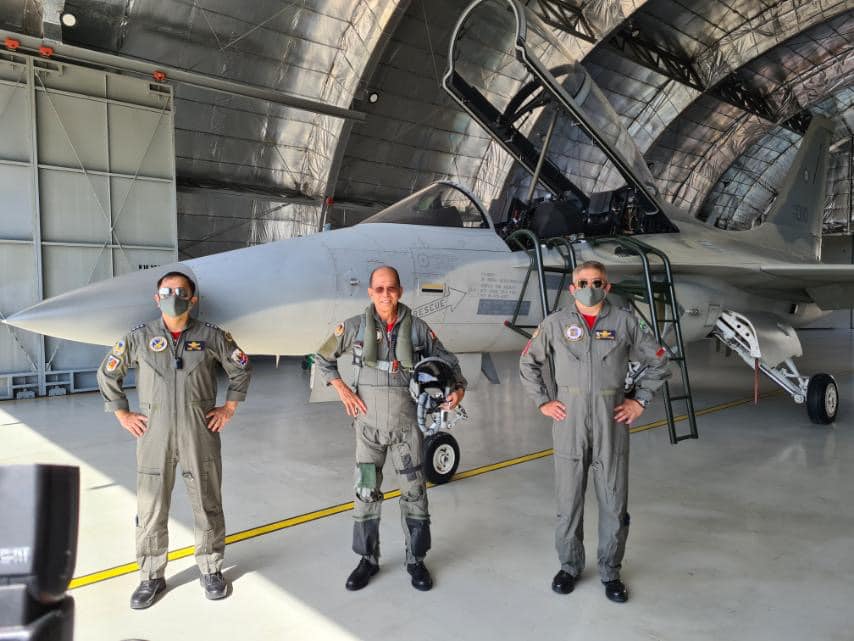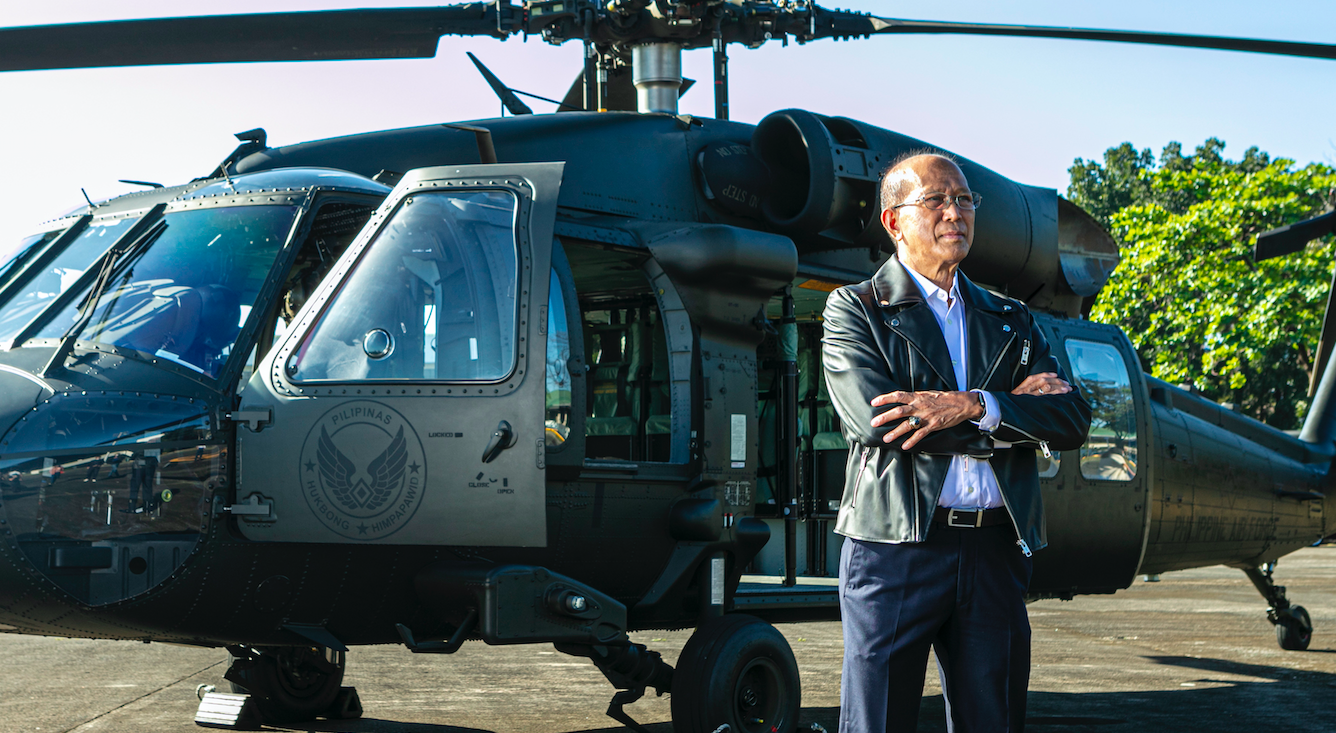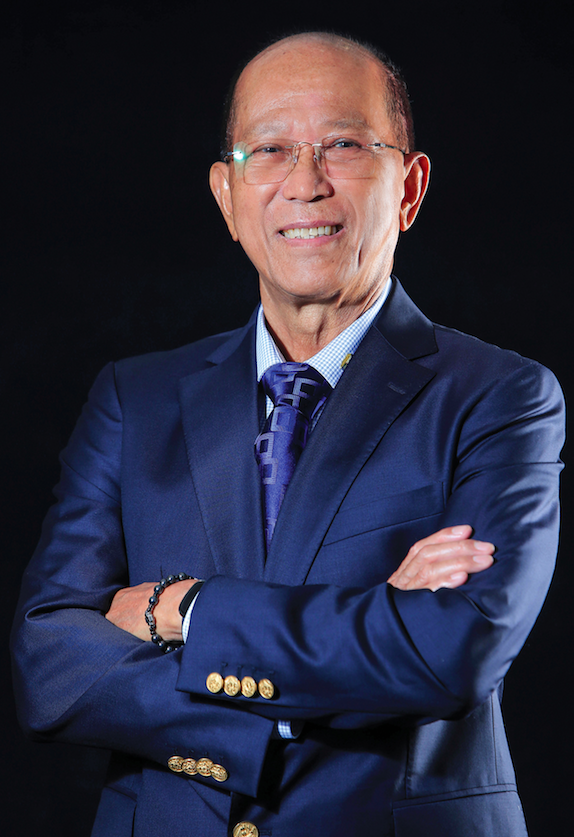Appointed by President Rodrigo Duterte as Secretary of National Defense in 2016, retired Army General Delfin Lorenzana is credited for building a modernized and highly functional defense setup that will enable the protection of the country’s national interests; and allow it to respond effectively to terrestrial and global security challenges — all before he formally steps down from office on June 30.
Known for his untarnished record in public service, the 73-year-old Defense Chief says: “I want to be remembered as the Secretary of Defense who was able to make a difference: the improvement of the Defense organization for the good of the country.”
In the last six years, the DND was relentless in its pursuit of modernizing and developing the defense department in order to optimize its response procedure to domestic and global security challenges. New defense capabilities were developed and military resources were boosted significantly.
Modern Defense
Among them are the acquisition of two multi-role guided missile frigates — the BRP Jose Rizal (FF-150) and BRP Antonio Luna (FF-151) — which were commissioned in 2020 and 2021 respectively, six units of Embraer A-29B Super Tucano close air support aircraft, 16 units of S-70i Black Hawk combat utility helicopters; air surveillance radars, drones, missile systems, and various force protection and weapons systems.
“These new assets will further strengthen our humanitarian assistance and disaster response, air, maritime and land defense, as well as joint command and control capabilities,” Lorenzana says.

The AFP has also conducted 6,958 naval surface patrols and 6,432 air patrols in the country’s territory and borders, including in the hotly-contested West Philippine Sea (WPS).
To expand maritime domain awareness in the WPS, the DND also built new structures on Pagasa (Thitu) Island in Kalayaan Island Group, Palawan. This includes a beaching ramp which was inaugurated in 2020, and an airstrip which is set to finish this month.
There were also improved structures in six other Philippine-occupied islands in WPS namely in Kota, Parola, Panata, Likas, Lawak, and Panguan to assert the country’s sovereignty and fortify the military’s defenses of the said areas.
“With these modern and multi-role assets added to the AFP’s inventory, as well as the capacity development and reforms we have instituted, we are hopeful that the defense sector’s trajectory will continue its upward momentum and lead to sustained peace and stability for the nation,” Lorenzana says.
Counter-measures against insurgency, terrorism & extremism
The DND, through the Armed Forces of the Philippines (AFP), also sustained counter-insurgency and counter-terrorism operations through the effective application of a whole-of-nation, collaborative approach to end local armed conflicts.
Moreover, through the government’s reintegration program, thousands of rebels and their supporters have returned to the fold of the law, indicating the widespread loss in ground-level support for the CTG and LTGs.

Through the DND, the Armed Forces of the Philippines (AFP) conducted military operations that led to the dismantling of 56 out of 68 guerilla fronts (GFs) of the Communist Party of the Philippines, New People’s Army, and National Democratic Front (CPP-NPA-NDF) from June 2016 to April 2022.
A total of 25,772 communist rebels and 2,290 violent extremists were either killed, arrested, or have surrendered to authorities as of April 30. Meanwhile, 1,544 members of Abu Sayyaf Group (ASG), 971 members of Bangsamoro Islamic Freedom Fighters (BIFF), and 1,427 members of Dawlah Islamiyah (DI) were also neutralized by the AFP.
Even the kidnappings perpetrated by the notorious ASG in Mindanao have been prevented by the AFP. In 2016, the ASG had 21 hostages, all of whom were rescued by the military. The group currently holds no hostages.

“Perhaps one of the biggest accomplishments of the DND is the liberation of Marawi where we made accountable all of those who attacked the city in 2017. We were able to prevent the ISIS [ Islamic State] from establishing their base here in our country,” explains Lorenzana, referring to the five-month urban war between the state forces against local and foreign terrorists led by the Maute Group and ASG.
The creation of the Bangsamoro Autonomous Region in Muslim Mindanao (BARMM) in 2019 through the ratification and passage of the Bangsamoro Organic Law (BOL) in 2018 also came to fruition under the current administration.
This paved the way for the normalization track of the Moro Islamic Liberation Front (MILF), which was once a fierce enemy of the State. Under the normalization track, about 19,200 MILF combatants and 2,100 weapons were decommissioned by the government.
As of April 30, a total of 9,326 former rebels were provided with financial assistance; 30,009 surrenderees and their dependents have graduated in skills training; and 978 others have received housing assistance through the Enhanced Comprehensive Livelihood Integration Program (E-CLIP).
President Duterte also signed the Anti-Terrorism Act of 2020 on July 3, 2020 to provide a stronger legal instrument for combatting terrorism; and Executive Order No. 70 in 2018 which harmonizes all efforts towards a united national peace framework through the creation of the National Task Force to End Local Communist Armed Conflict (NTF-ELCAC).
“This is what we have accomplished. This is what we will pass down to the people and to the next administration. This is the legacy of President Duterte,” the tireless Defense Chief adds.
Since he took office, Lorenzana can now consider his mission accomplished as he managed to achieve all his targets, with the support of the “One Defense Team” strategy.
Moreover, the modernization and professionalization of both military and civilian bureaus sums up his accomplishments, empowering the defense sector to effectively respond to domestic and global security challenges and advance national interests.






